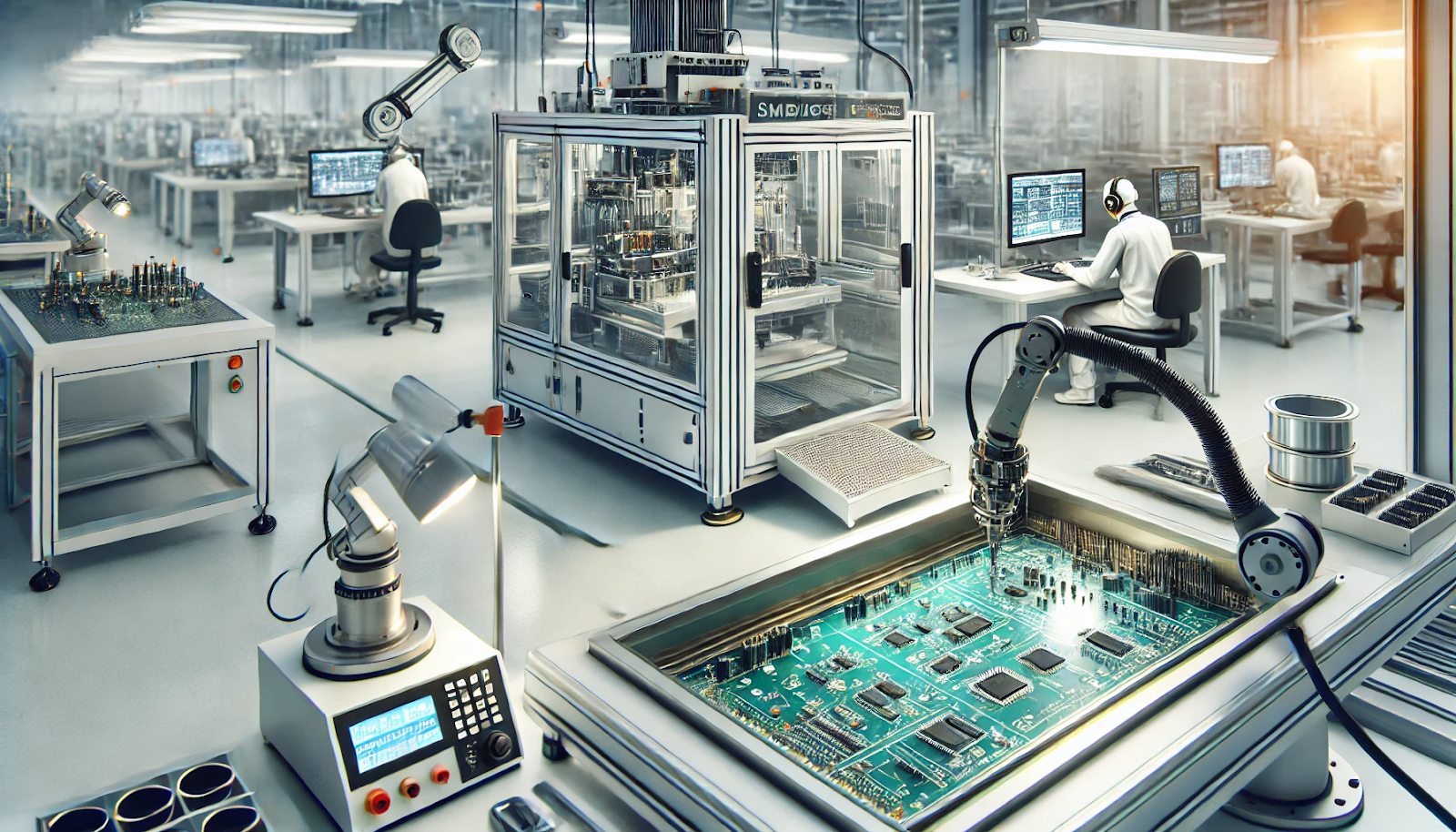In the intricate world of electronics, where devices shrink and performance expectations rise, the need for precision and efficiency in assembling printed circuit boards (PCBs) becomes paramount. This is where Surface Mount Technology (SMT) lines step in, streamlining the process from start to finish. But what exactly happens on an SMT line, and how does it ensure the reliable production of PCBs? Let’s break it down.
What is SMT?
To appreciate the magic of an SMT line, it’s essential to start with the basics. SMT’s full form is surface mount technology, which is a method for mounting electronic components directly onto the surface of a PCB. Unlike older through-hole technology, SMT eliminates the need for drilling holes, making the assembly faster, more efficient, and better suited for modern, compact electronics.
The SMT Line: A Journey Through Efficiency
An SMT line is a production setup designed to handle the entire PCB assembly process, from applying solder paste to the final inspection and testing. It’s a symphony of precision machinery and smart workflows that ensures each board is assembled with accuracy and speed. Here’s how it all comes together:
1. Applying Solder Paste
The journey begins with solder paste, a mixture of powdered solder and flux. This paste is meticulously applied to the PCB using a stencil printer, ensuring it only lands where components will be placed. Think of it as adding glue dots to a surface, but with a lot more precision!
2. Pick-and-Place Machine
Next, the pick-and-place machine takes over. This is one of the most fascinating parts of the SMT line. Using high-speed cameras and robotic arms, the machine picks up tiny components (some smaller than a grain of rice) and places them onto the solder-paste-covered PCB.
The speed and accuracy of this step are nothing short of amazing. Advanced SMT lines can place thousands of components per hour, ensuring even the most complex PCBs are assembled efficiently.
3. Reflow Soldering
Once the components are in place, the PCB moves into a reflow oven. Here, it undergoes a carefully controlled heating process, causing the solder paste to melt and form strong electrical and mechanical bonds between the components and the board.
This step is critical—too much heat could damage components, while too little might result in weak connections. SMT lines are equipped with precise temperature controls to avoid such issues.
4. Inspection and Testing
After soldering, the assembled PCB undergoes a thorough inspection. Automated optical inspection (AOI) systems scan the board to detect misaligned components, soldering defects, or other irregularities.
X-ray inspection might be used to check connections hidden beneath components for boards with highly complex circuitry. Once everything passes the visual tests, functional testing ensures the PCB operates as intended.
Why SMT Lines Are Game-Changers
An SMT line isn’t just about assembling PCBs—it’s about doing it with unparalleled efficiency, accuracy, and scalability. By automating most of the process, manufacturers can produce high volumes of boards while maintaining consistent quality. This is why SMT lines are the backbone of industries ranging from consumer electronics to automotive and medical devices.
Conclusion.
As technology evolves, SMT lines are becoming even smarter. AI-powered systems are optimizing pick-and-place operations, predictive maintenance ensures machines run smoothly, and innovations in soldering technology are enhancing reliability.
For anyone diving into the world of electronics manufacturing, understanding how an SMT line works isn’t just fascinating—it’s essential. From solder paste to testing, the SMT line is a testament to how far manufacturing technology has come, enabling the creation of the cutting-edge devices we rely on every day.











